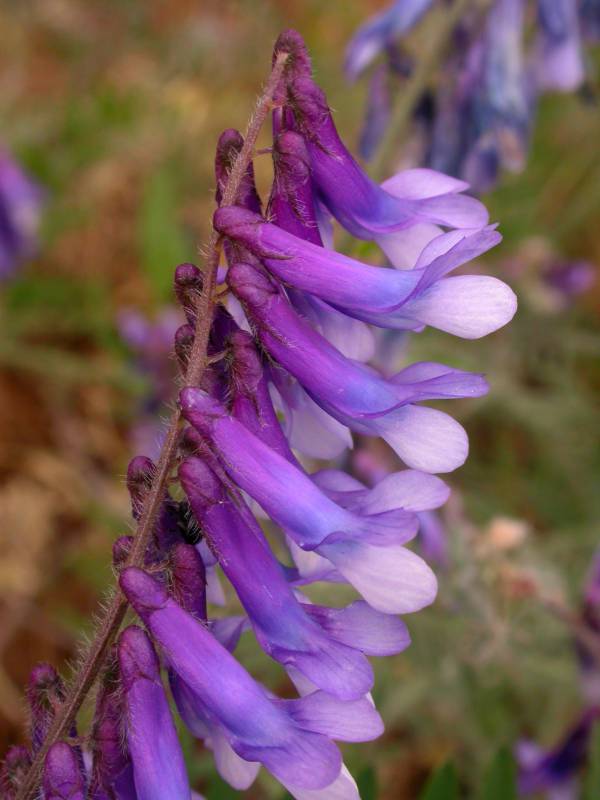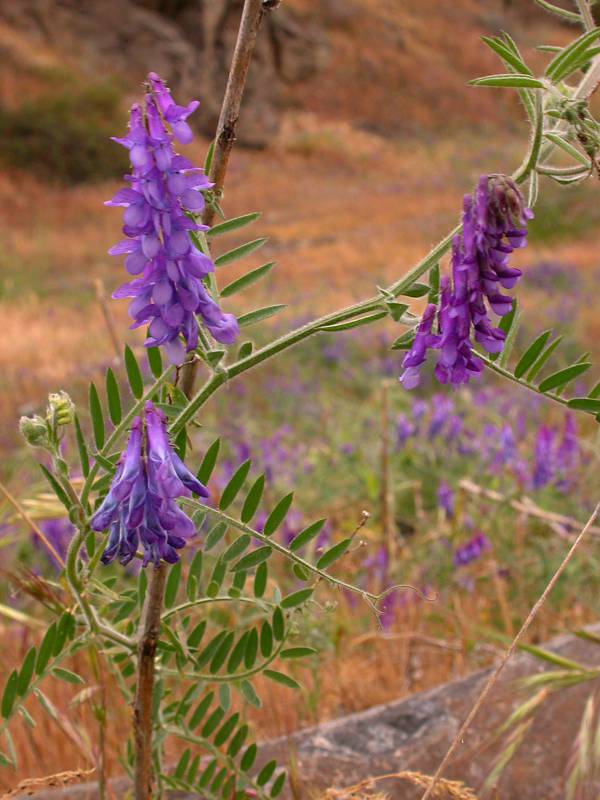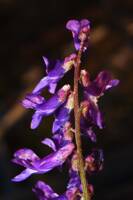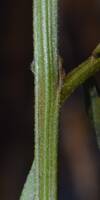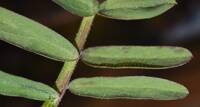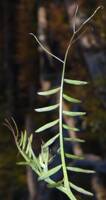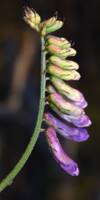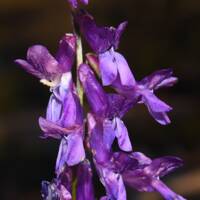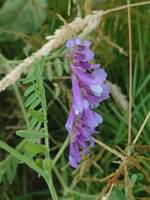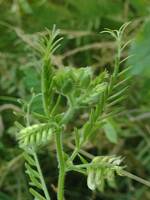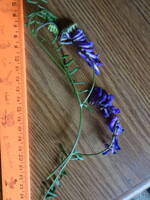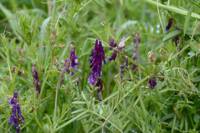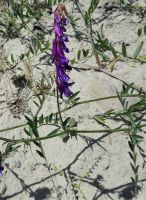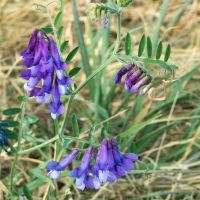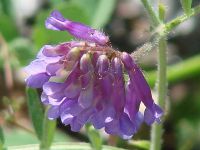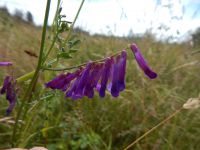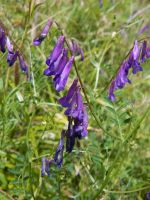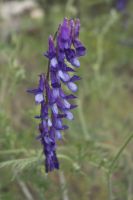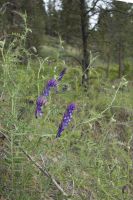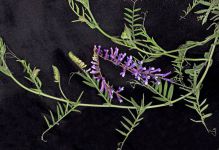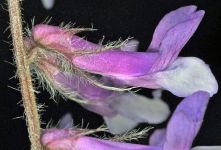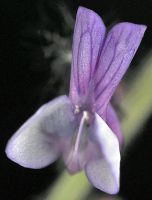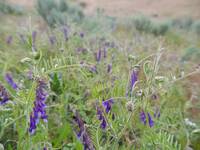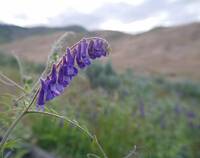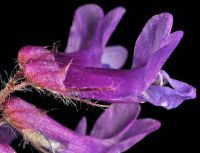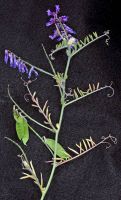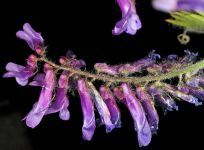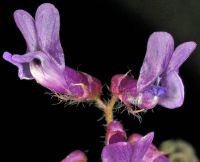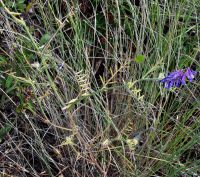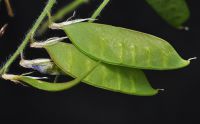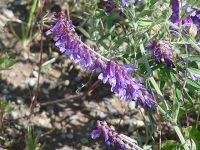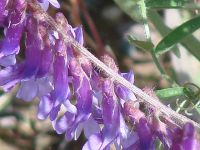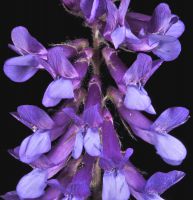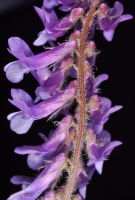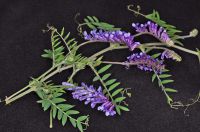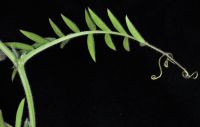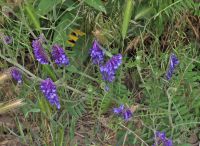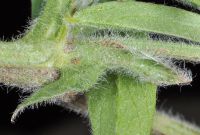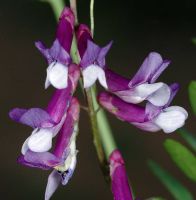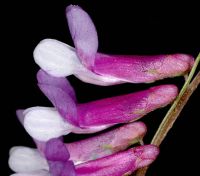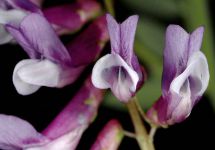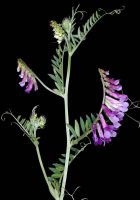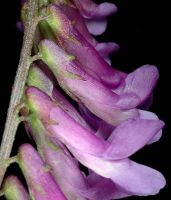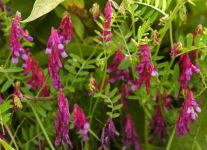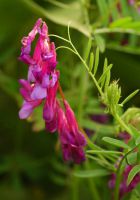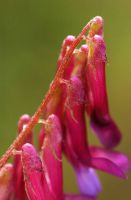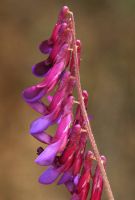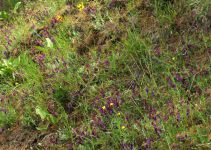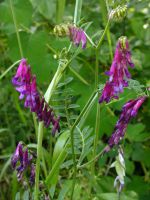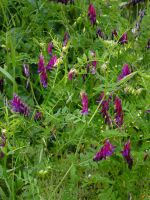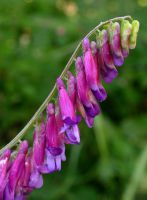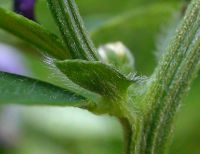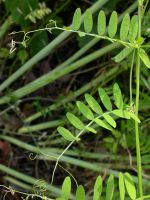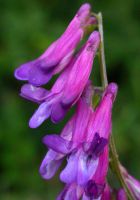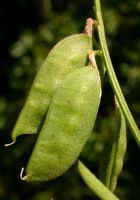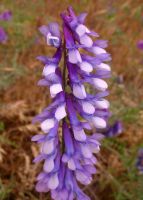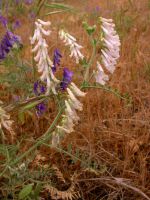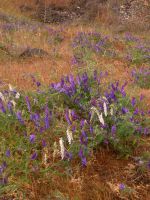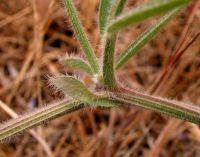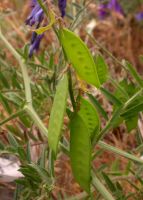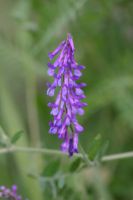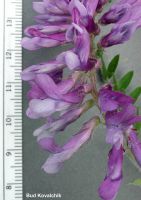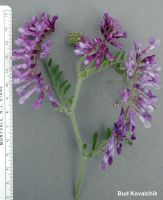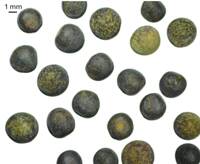Distribution: Occurring on both sides of the Cascades crest in Washington; Alaska to California, east across most of North America to the Atlantic Coast.
Habitat: Roadsides, meadows, grasslands, prairies, and other disturbed open areas.
Flowers: May-September
Origin: Introduced from Eurasia and North Africa
Growth Duration: Annual
Conservation Status: Not of concern
Pollination: Bumblebees, bees, butterflies
Copiously villous annual, the stem 0.5-2 m. tall, clambering.
Leaves pinnate; leaflets 10-20, linear-lanceolate to narrowly oblong, 1.5-2 cm. long; stipules entire to toothed, 5-12 mm. long; tendrils well developed.
Inflorescence of 20- to 60-flowered, dense, one-sided racemes, on long, axillary peduncles; flowers 15-18 mm. long, reddish-purple to violet; calyx less than half the length of the corolla, the tube 2.5-4 mm. long, very strongly gibbous at the base, the pedicel attached just under the bulge; upper 2 calyx teeth triangular-based but prolonged to a slender tip; lower 3 linear and about equal to the tube; style densely bearded at the tip.
Pod 2-3 cm. long and 6-10 mm. broad, several seeded.
Publication: Tent. Fl. Germ. 2(2): 182. 1793.
-
var. glabrescens – hairy vetch, winter vetch, woolly vetch
 Occurring west of the Cascades crest and in the Columbia River Gorge in Washington; Washington to California, also in Montana, and more common in central and eastern North America.
Occurring west of the Cascades crest and in the Columbia River Gorge in Washington; Washington to California, also in Montana, and more common in central and eastern North America. -
var. villosa – hairy vetch, winter vetch, woolly vetch
 Occurring on both sides of the Cascades crest in Washington; Alaska to California, east across most of North America to the Atlantic Coast.
Occurring on both sides of the Cascades crest in Washington; Alaska to California, east across most of North America to the Atlantic Coast.
PNW Herbaria: Specimen records of Vicia villosa in the Consortium of Pacific Northwest Herbaria database
WA Flora Checklist: Vicia villosa checklist entry
OregonFlora: Vicia villosa information
E-Flora BC: Vicia villosa atlas page
CalPhotos: Vicia villosa photos

